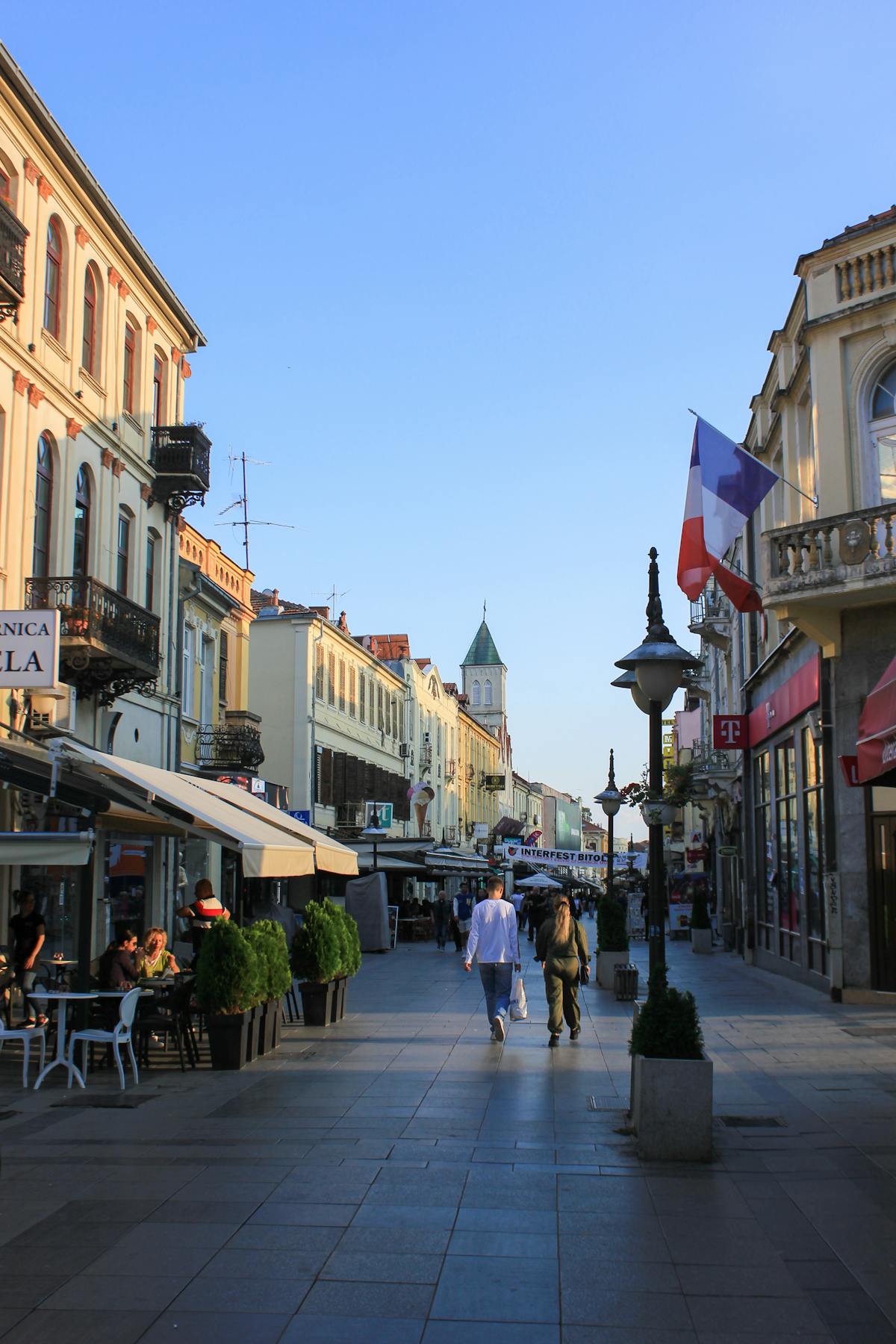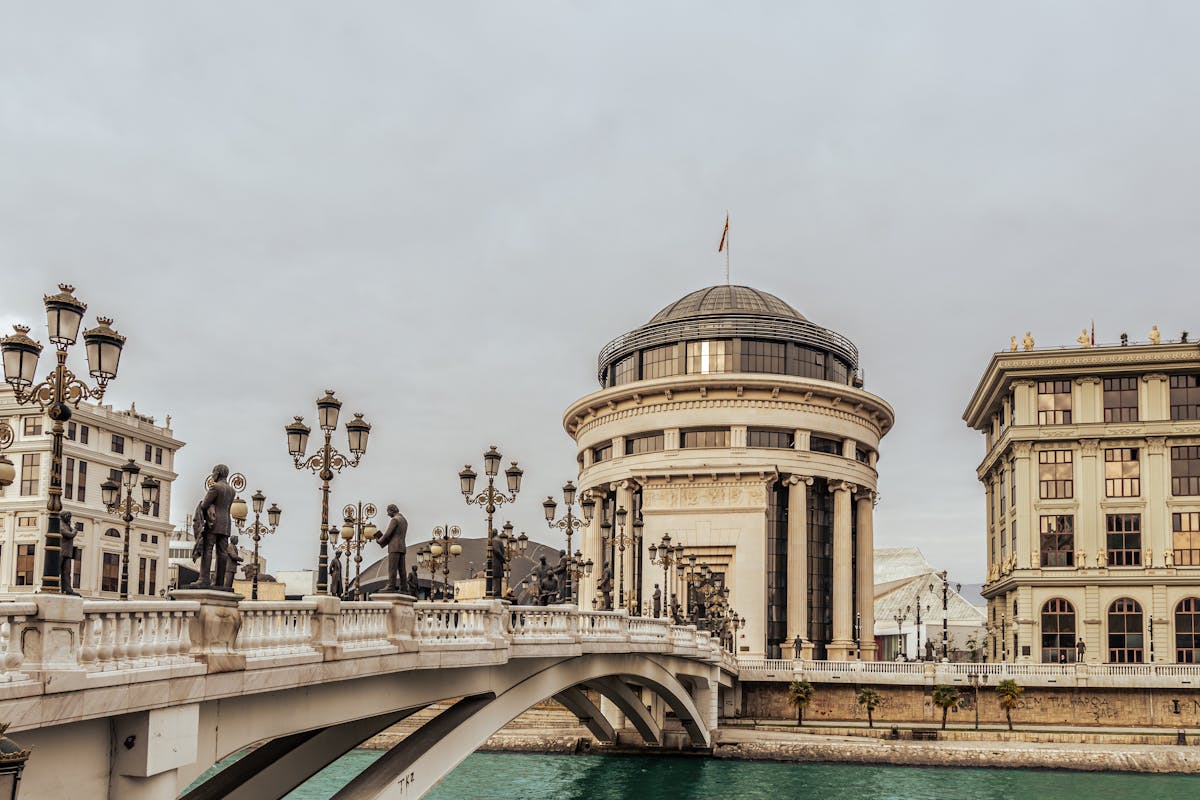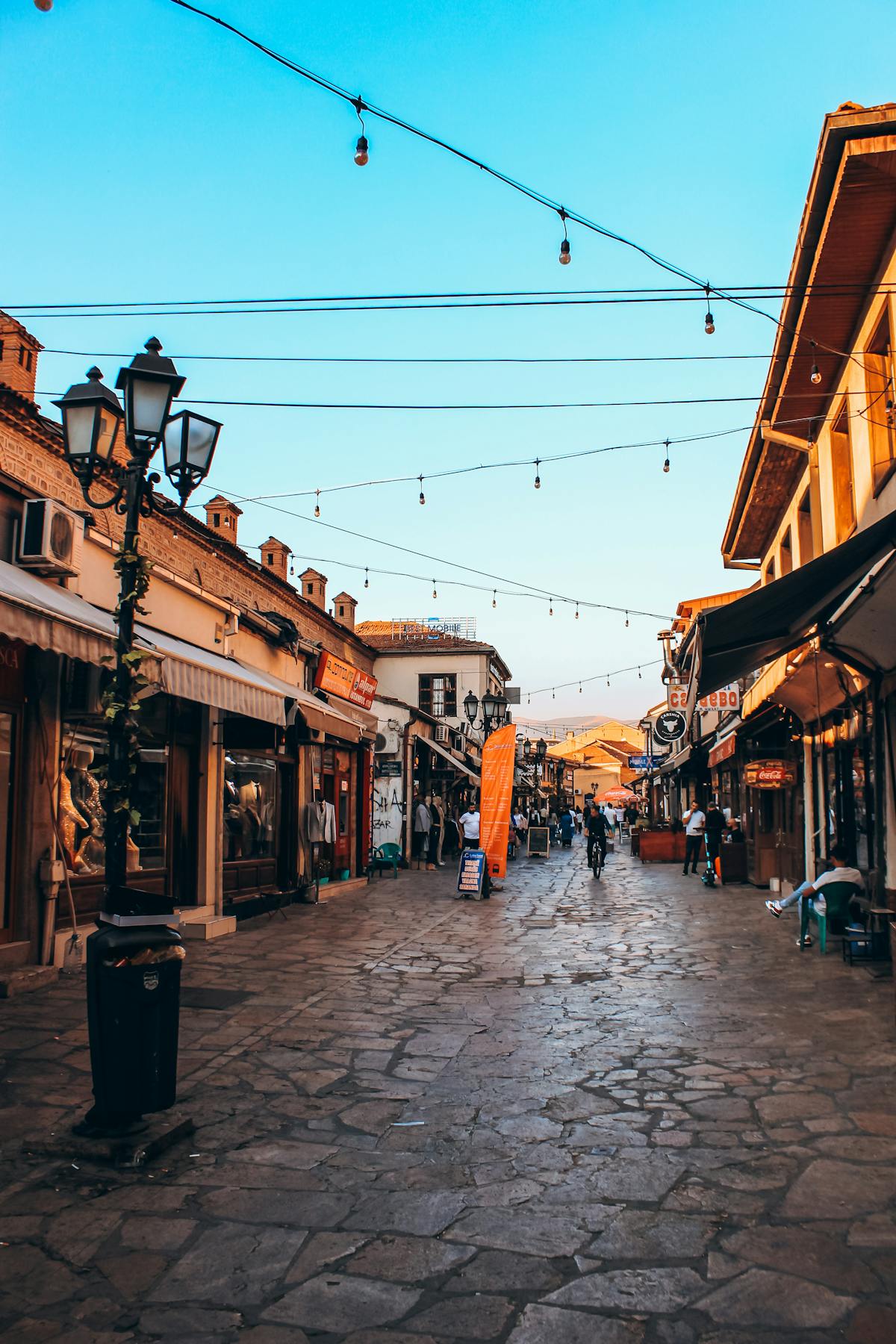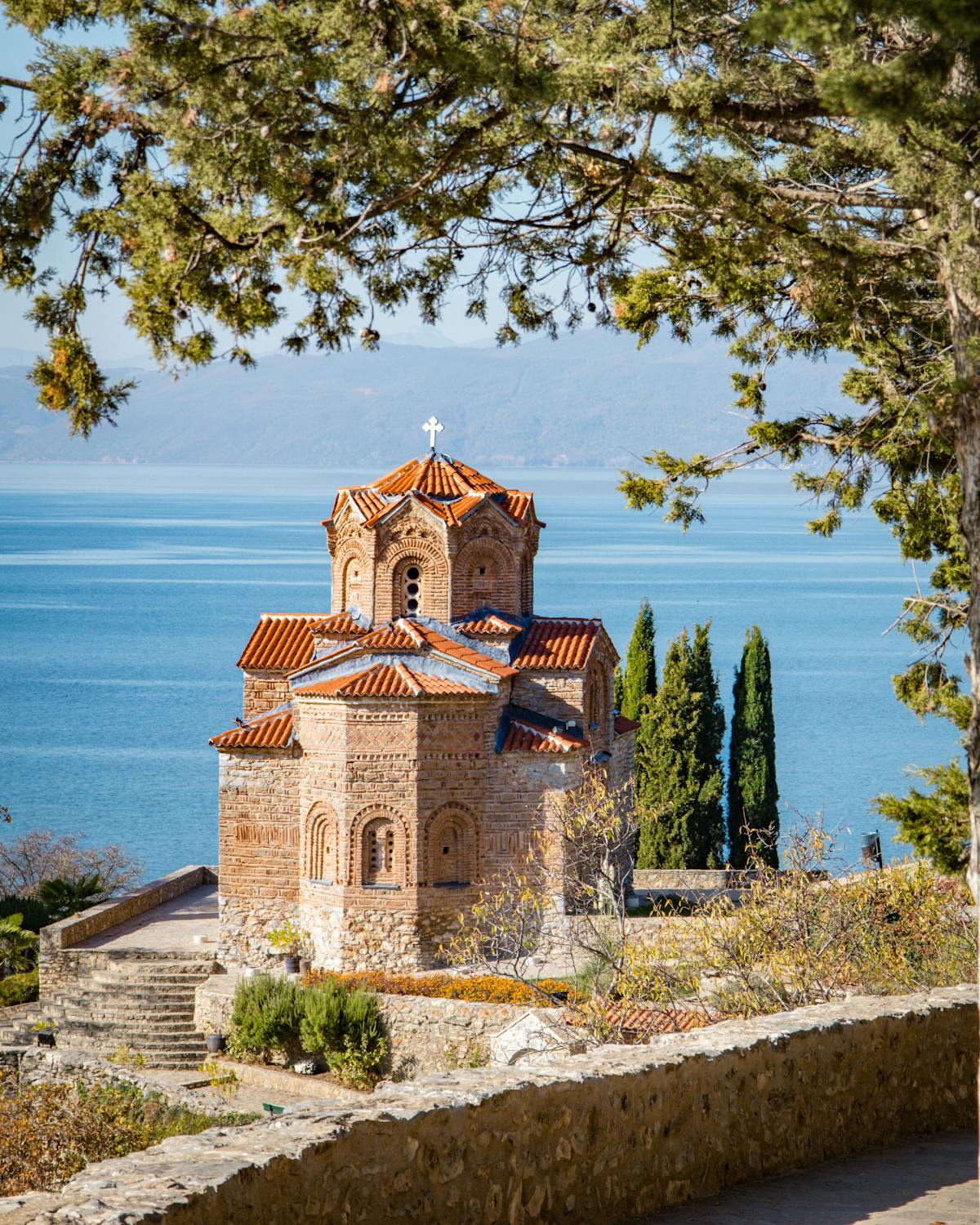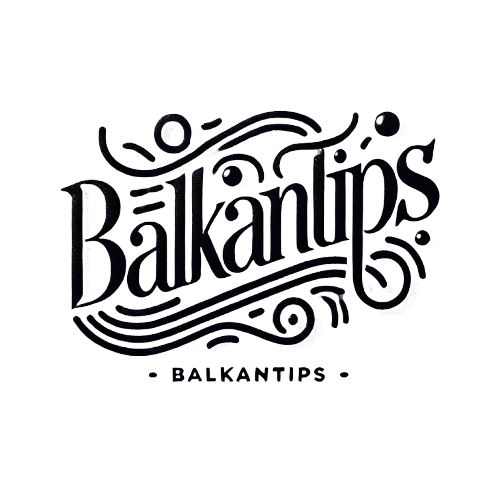

Explore the stunning landscapes, rich culture, and unique history of North Macedonia.
North Macedonia is a landlocked country in the Balkan Peninsula, known for its breathtaking landscapes, rich history, and diverse culture. Here are key periods in North Macedonia's historical development: Ancient Times: The region was home to the ancient Paeonians and later became part of the Kingdom of Macedonia, famously associated with figures like Philip II and Alexander the Great. The archaeological site of Heraclea Lyncestis offers insights into this period. Medieval North Macedonia: The area experienced significant influence from the Byzantine Empire and the rise of the First and Second Bulgarian Empires. The establishment of the Ohrid Archbishopric in the 10th century marked a significant cultural and religious development. Ottoman Era: North Macedonia became part of the Ottoman Empire in the late 14th century, which lasted for several centuries. This period left a lasting impact on the region's architecture, cuisine, and cultural practices, exemplified by structures like the Stone Bridge in Skopje and the Old Bazaar. Balkan Wars and World War I: Following the Balkan Wars, North Macedonia was annexed by Serbia. After World War I, it became part of the Kingdom of Serbs, Croats, and Slovenes, facing significant political and social changes. Yugoslavia: After World War II, North Macedonia was established as one of the six republics of the Socialist Federal Republic of Yugoslavia. This period saw modernization and industrial growth, alongside efforts to foster a unique Macedonian identity. Independence: In 1991, North Macedonia declared independence from Yugoslavia, undergoing a complex transition to establish a democratic government and market economy. The country faced challenges, including a naming dispute with Greece that was resolved with the Prespa Agreement in 2018. Modern North Macedonia: Today, North Macedonia is recognized for its stunning natural beauty, including Lake Ohrid—one of Europe's oldest and deepest lakes—and the UNESCO-listed city of Ohrid, known for its historical churches and monasteries. The country has a growing tourism sector, driven by its rich cultural heritage and hospitality. North Macedonia is also home to a vibrant blend of ethnic communities, contributing to its cultural diversity. Festivals, traditional music, and cuisine reflect the country's multicultural fabric, making it a unique destination in the Balkans.
North Macedonian culture is a vibrant blend of Slavic, Greek, and Ottoman influences, characterized by rich traditions, music, and cuisine. The country's cultural identity is celebrated through its folklore, hospitality, and numerous festivals.
North Macedonian architecture is a fascinating blend of influences, reflecting its rich history and diverse cultural heritage. The architectural landscape spans from ancient ruins to Ottoman-era structures and modern designs. Key styles and examples include:
The architectural diversity in North Macedonia tells the story of its historical journey and cultural evolution. From ancient ruins to vibrant urban designs, the country’s architecture is a testament to its rich heritage and dynamic present.
North Macedonia is home to a variety of vibrant festivals and celebrations that reflect its cultural heritage and traditions.
North Macedonian cuisine is characterized by its use of fresh, local ingredients and a fusion of Mediterranean and Balkan flavors.
The history of North Macedonia begins in ancient times, with its territory inhabited by various tribes, including the Paeonians, who established significant kingdoms around the 6th century BC. This region was strategically important due to its position along trade routes connecting the Adriatic Sea with the interior of the Balkans. Key archaeological sites, such as Heraclea Lyncestis and the ancient city of Stobi, highlight the cultural and commercial significance of this period, showcasing remnants of fortifications, theaters, and public buildings.
Evidence of human activity in North Macedonia dates back to the Paleolithic era, with sites like the cave at Vrelo revealing tools and artifacts. The Neolithic period saw the development of advanced societies, with the Vinča culture leaving behind significant archaeological findings, including pottery and settlement structures. These early communities practiced agriculture and animal husbandry, establishing the foundation for later civilizations.
In 106 AD, the Roman Empire conquered the region, incorporating it into the province of Dacia. The Romans established cities, roads, and infrastructure, introducing Latin culture and language. Notable archaeological sites include the ancient city of Stobi, where ruins of temples, theaters, and public baths can still be seen. Roman rule laid the groundwork for the Latinization of the region and the spread of Christianity in later centuries, with early Christian churches emerging during this time.
Following the decline of Roman authority, Slavic tribes migrated into the area in the 6th century, leading to the formation of early medieval principalities. The region became a cultural and religious center under the influence of the Byzantine Empire, with the establishment of the Ohrid Archbishopric in the 10th century marking a significant development in the region's spiritual and cultural life. The city of Ohrid became known as the "Jerusalem of the Balkans" due to its numerous churches and monasteries.
By the late 14th century, North Macedonia fell under the control of the expanding Ottoman Empire. This period was marked by the construction of notable architectural landmarks, such as mosques, bridges, and public baths. The Ottomans introduced significant administrative and social changes, leading to a diverse cultural landscape where various ethnic and religious groups coexisted. The 16th century saw the flourishing of trade and crafts, particularly in urban centers like Skopje and Bitola.
The 17th and 18th centuries were marked by uprisings against Ottoman domination, as the population sought greater autonomy and preservation of their cultural identity. The region became a center for Serbian nationalism, with leaders such as Karađorđe Petrović playing a crucial role in the struggle for liberation. The decline of the Ottoman Empire in the 19th century fostered a sense of nationalism among the Slavic peoples, leading to increased demands for independence and autonomy.
After World War I, North Macedonia became part of the newly formed Kingdom of Serbs, Croats, and Slovenes, later known as the Kingdom of Yugoslavia. This period was characterized by political and social upheaval, with various ethnic groups seeking representation and autonomy. The interwar years saw a mix of cultural revival and nationalistic tensions, with significant efforts to promote Macedonian language and identity within the broader Yugoslav context.
During World War II, North Macedonia was occupied by Axis powers, leading to significant resistance movements. The National Liberation Army, supported by various ethnic groups, played a crucial role in the struggle against occupation. The region's diverse communities united against common adversaries, and by the end of the war, North Macedonia was liberated and integrated into the Federal People's Republic of Yugoslavia as one of its republics. This period marked the beginning of the formal recognition of Macedonian identity and language.
Under Tito's communist regime, North Macedonia experienced economic development and infrastructural improvements. The government promoted a unified Yugoslav identity while also recognizing and fostering a distinct Macedonian identity. However, ethnic tensions simmered beneath the surface, and calls for greater autonomy and recognition of cultural rights persisted. The 1980s brought increasing dissatisfaction with the central government, leading to greater demands for independence.
In 1991, North Macedonia declared independence from Yugoslavia following a referendum, navigating a tumultuous transition characterized by political instability and economic challenges. The 2001 ethnic conflict, sparked by tensions between ethnic Macedonians and Albanians, led to the Ohrid Agreement, which aimed to promote peace and greater rights for minority communities. In recent years, North Macedonia has pursued European integration, joining NATO in 2020 and working towards EU membership. The country is recognized for its rich cultural heritage and stunning natural landscapes, including Lake Ohrid and the Šar Mountains. The political landscape continues to evolve, reflecting ongoing debates about national identity, governance, and the future direction of the country, with a focus on balancing modernization and the preservation of its cultural identity.
Early Origins of the Macedonian Language
Proto-Slavic Roots: The Macedonian language, like other South Slavic languages, traces its origins to Proto-Slavic, spoken by early Slavic tribes migrating to the Balkans in the 6th and 7th centuries AD. These groups gradually developed regional dialects, leading to distinct linguistic identities within South Slavic languages.
Arrival of the Slavs: The ancestors of modern Macedonians settled in the region during the early Middle Ages, speaking an early form of Old Slavic, which evolved into what is now recognized as Macedonian.
Old Church Slavonic Influence: In the 9th century, Old Church Slavonic was introduced to the region, primarily for religious purposes. This language influenced early Macedonian writing and religious literature, establishing a foundation for written Slavic languages.
Medieval Dialects: The Macedonian language developed unique characteristics during the medieval period, with dialects reflecting regional variations. The use of Cyrillic script for administrative and religious texts was common, showcasing phonetic and grammatical features distinct from other South Slavic languages.
Literary Tradition: The 10th century saw the establishment of a rich literary tradition in the region, particularly through the works of Saints Cyril and Methodius, who promoted literacy and the use of Slavic languages in religious contexts. The influence of these saints laid the groundwork for the development of the Macedonian literary language.
Influence of Turkish and Arabic: During the Ottoman period (1496-1912), Macedonian absorbed a significant number of Turkish and Arabic vocabulary, particularly in administration, daily life, and cultural contexts. Although primarily written in Cyrillic, some Arabic script was used for religious texts.
Cultural Exchange: The Ottoman presence fostered a rich cultural exchange, influencing Macedonian vocabulary and expressions and reflecting the diverse linguistic influences during this time.
Macedonian Linguistic Revival: The 19th century saw a resurgence of interest in the Macedonian language and identity, coinciding with the broader South Slavic national awakening. Efforts to standardize Macedonian emphasized its distinctiveness from Serbian and Bulgarian, culminating in the establishment of a formal linguistic identity.
Influence of the Illyrian Movement: The Illyrian Movement and other nationalist efforts promoted the idea of a unified South Slavic language and culture, influencing Macedonian intellectuals to recognize and preserve their linguistic heritage. This period saw the establishment of cultural societies and journals dedicated to the promotion of the Macedonian language.
Standardization: Following World War II, the Macedonian language was officially standardized in 1944, establishing its distinct status within the Yugoslav federation. The basis for the standard language is the Vardar dialect, which reflects a blend of local linguistic features. The establishment of a standard language was crucial for national identity.
Modern Influences: The Macedonian language has absorbed numerous words from Turkish, Greek, and English, reflecting historical interactions and cultural diversity. This ongoing evolution showcases the language's adaptability in a globalized world, with influences seen in contemporary vocabulary related to technology, media, and popular culture.
Phonology: Macedonian has a diverse phonemic inventory, featuring unique vowel and consonant sounds. It is primarily written in the Cyrillic alphabet, standardized during the 20th century, with some efforts to promote its use in digital media and education.
Grammar: Like other South Slavic languages, Macedonian is highly inflected. It features a complex grammatical structure with nouns, pronouns, and adjectives changing forms based on case, number, and gender. Macedonian has five grammatical cases and a rich system of verb conjugation, including aspects for expressing completed and ongoing actions.
Vocabulary: The vocabulary of Macedonian is primarily of Slavic origin, enriched by numerous loanwords from Turkish, Greek, and more recently, English. This reflects Macedonia's historical interactions and cultural exchanges, especially in contemporary contexts related to technology, politics, and lifestyle. Additionally, dialectal variations within Macedonia, such as the "Western" and "Eastern" dialects, contribute to the richness and diversity of the language.
The Macedonian language is not only a means of communication but also a vital aspect of national identity. Its preservation and promotion are essential to the cultural heritage of North Macedonia. Literary works, folk songs, and traditional narratives contribute to the cultural landscape, fostering a sense of unity and pride among speakers.


